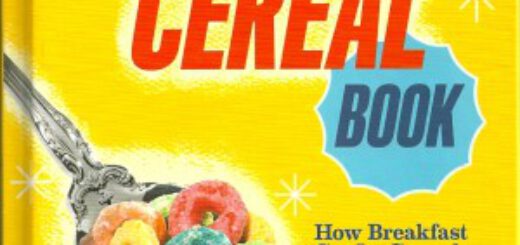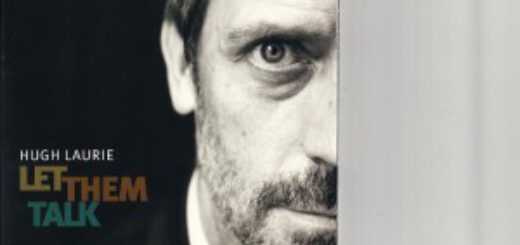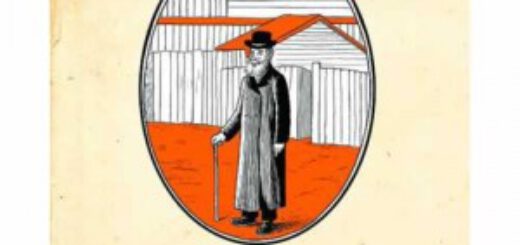REVIEW: The King of Comedy
 There’s a scene early on in The King of Comedy where late night talk show host Jerry Langford (played by Jerry Lewis) leaves his New York City apartment and walks through crowded midtown on his way to the studio. Fans greet him and kibbitz with him and Jerry, always on the move, waves, smiles, and tosses one-liners back at them. He gets waylaid at a corner by a woman on a payphone who gushes effusively—“You’re just wonderful. I’ve watched you your entire career. You’re a joy to the world!”—while he scribbles an autograph for her nephew, with whom she’s talking on the phone. Then, shoving the telephone at Jerry, she asks, “Would you just please say something to my nephew Morris on the phone? He’s in the hospital.” Jerry politely demurs, explaining that he’s late, and, in the blink of an eye, she turns from adoring fan to spurned maniac, screaming after him, “You should only get cancer! I hope you get cancer!”
There’s a scene early on in The King of Comedy where late night talk show host Jerry Langford (played by Jerry Lewis) leaves his New York City apartment and walks through crowded midtown on his way to the studio. Fans greet him and kibbitz with him and Jerry, always on the move, waves, smiles, and tosses one-liners back at them. He gets waylaid at a corner by a woman on a payphone who gushes effusively—“You’re just wonderful. I’ve watched you your entire career. You’re a joy to the world!”—while he scribbles an autograph for her nephew, with whom she’s talking on the phone. Then, shoving the telephone at Jerry, she asks, “Would you just please say something to my nephew Morris on the phone? He’s in the hospital.” Jerry politely demurs, explaining that he’s late, and, in the blink of an eye, she turns from adoring fan to spurned maniac, screaming after him, “You should only get cancer! I hope you get cancer!”
 Later, wannabe stand-up comedian and obsessive fan Rupert Pupkin (Robert DeNiro) shows up as an uninvited weekend guest at Langford’s country house, unsuspecting girlfriend Rita (Diahnne Abbott) in tow, in an effort to get Jerry to take a look at his comedy routine in the belief it will lead to an offer to appear on Jerry’s show. An earlier, brief encounter that ended with Langford telling Pupkin to call his office in an effort to get rid of him had only fueled the wannabe’s delusions that he and Langford were friends. Langford angrily dissuades the clearly baffled Pupkin of that notion and, like the woman whose nephew Jerry wouldn’t talk to, Pupkin’s response to his inappropriate demand on Langford’s time is immediate and visceral. Neither fan can understand how Jerry Langford can treat them this way. “I’m gonna work fifty times harder and I’m gonna be fifty times more famous than you,” Rupert tells him. “Then you’re gonna have idiots like you plaguing your life!” Jerry snaps.
Later, wannabe stand-up comedian and obsessive fan Rupert Pupkin (Robert DeNiro) shows up as an uninvited weekend guest at Langford’s country house, unsuspecting girlfriend Rita (Diahnne Abbott) in tow, in an effort to get Jerry to take a look at his comedy routine in the belief it will lead to an offer to appear on Jerry’s show. An earlier, brief encounter that ended with Langford telling Pupkin to call his office in an effort to get rid of him had only fueled the wannabe’s delusions that he and Langford were friends. Langford angrily dissuades the clearly baffled Pupkin of that notion and, like the woman whose nephew Jerry wouldn’t talk to, Pupkin’s response to his inappropriate demand on Langford’s time is immediate and visceral. Neither fan can understand how Jerry Langford can treat them this way. “I’m gonna work fifty times harder and I’m gonna be fifty times more famous than you,” Rupert tells him. “Then you’re gonna have idiots like you plaguing your life!” Jerry snaps.
 It’s an interesting coincidence that the Blu-Ray edition of The King of Comedy, Martin Scorcese’s 1982 comedy about fame and obsession landed in my mailbox the same day Archie Comics released the news that their flagship character, was going to die in an upcoming comic book story which I wrote. The news thrust me into a Warholian fifteen-minutes of online fame. On Facebook, people who had earlier praised my work were now denouncing me for “daring” to kill off a beloved American icon, or vilifying me for my creative bankruptcy in participating in yet another comic book death “stunt,” feeling betrayed by my treatment of the character (that the Archie who’s dying is not the “real” Archie, but a future/what if?/alternate universe version of the character either escaped their notice or would have just interfered with their righteous indignation; the “real” teenage Archie remains alive and well in Riverdale.) On the flip side, strangers whose only connection to me was that most meaningless definition of “friend” ever coined, i.e. “Facebook friend,” were claiming reflected glory by posting that their “pal”/”buddy”/”friend” was behind this event, while others didn’t find it in any way inappropriate to email me asking to be let in on the secret of exactly how Archie was to die, or even requesting insider information on sensitive corporate internal affairs.
It’s an interesting coincidence that the Blu-Ray edition of The King of Comedy, Martin Scorcese’s 1982 comedy about fame and obsession landed in my mailbox the same day Archie Comics released the news that their flagship character, was going to die in an upcoming comic book story which I wrote. The news thrust me into a Warholian fifteen-minutes of online fame. On Facebook, people who had earlier praised my work were now denouncing me for “daring” to kill off a beloved American icon, or vilifying me for my creative bankruptcy in participating in yet another comic book death “stunt,” feeling betrayed by my treatment of the character (that the Archie who’s dying is not the “real” Archie, but a future/what if?/alternate universe version of the character either escaped their notice or would have just interfered with their righteous indignation; the “real” teenage Archie remains alive and well in Riverdale.) On the flip side, strangers whose only connection to me was that most meaningless definition of “friend” ever coined, i.e. “Facebook friend,” were claiming reflected glory by posting that their “pal”/”buddy”/”friend” was behind this event, while others didn’t find it in any way inappropriate to email me asking to be let in on the secret of exactly how Archie was to die, or even requesting insider information on sensitive corporate internal affairs.
 While my moment in the limelight pales in comparison with the plight of Jerry Langford, the experience did cause me to look at The King of Comedy from a very different perspective than I had in past viewings. I had always thought of the film as an indictment of obsessive fans, but it’s just as much a stark look at the price of fame. Rupert Pupkin is, in the very first scene, shown to be a member of the Day of the Locust-like swarm of obsessed, autograph seeking fans who haunt stage doors everywhere, but he holds himself above the hoi polloi. To Rupert, these aren’t just signatures dashed off by celebrities who probably didn’t even look at him while they were signing, but bonds of friendship between them.
While my moment in the limelight pales in comparison with the plight of Jerry Langford, the experience did cause me to look at The King of Comedy from a very different perspective than I had in past viewings. I had always thought of the film as an indictment of obsessive fans, but it’s just as much a stark look at the price of fame. Rupert Pupkin is, in the very first scene, shown to be a member of the Day of the Locust-like swarm of obsessed, autograph seeking fans who haunt stage doors everywhere, but he holds himself above the hoi polloi. To Rupert, these aren’t just signatures dashed off by celebrities who probably didn’t even look at him while they were signing, but bonds of friendship between them.
 Later, on a date with Rita, his high school crush, now a bartender in a seedy midtown tavern, he shows off his collection of signatures, casually tossing out facts and personal observations about the stars, trying to impress the clearly unimpressed and disbelieving woman. But Rupert can only see himself through the eyes of others and only in the way he needs to believe others see him. If he were deliberately inflating his talent and his connections to the stars, you would say he was shameless. But the sad, creepy truth is that Rupert, a thirty-something loser who works at a dead end messengers job and lives with his mother in whose basement he’s built a set where he hosts his own “talk show,” complete with life-size cardboard stand-ups of the stars, believes every word he says and is genuinely baffled when others fail to share his warped view of reality.
Later, on a date with Rita, his high school crush, now a bartender in a seedy midtown tavern, he shows off his collection of signatures, casually tossing out facts and personal observations about the stars, trying to impress the clearly unimpressed and disbelieving woman. But Rupert can only see himself through the eyes of others and only in the way he needs to believe others see him. If he were deliberately inflating his talent and his connections to the stars, you would say he was shameless. But the sad, creepy truth is that Rupert, a thirty-something loser who works at a dead end messengers job and lives with his mother in whose basement he’s built a set where he hosts his own “talk show,” complete with life-size cardboard stand-ups of the stars, believes every word he says and is genuinely baffled when others fail to share his warped view of reality.
 Jerry Langford’s reality is equally sad. He’s one of the most famous faces in the country, but his entire world is constrained by that fame. He can’t walk down the street without being badgered by everyone who believes that because he comes into their bedroom every night on their TVs he also belongs to them in person. Even a solitary dinner in his lonely apartment is violated by a fan who have somehow gotten hold of his telephone number and think it’s okay to call with their unreasonable demands on his time, attention, and, as we’ll see, love.
Jerry Langford’s reality is equally sad. He’s one of the most famous faces in the country, but his entire world is constrained by that fame. He can’t walk down the street without being badgered by everyone who believes that because he comes into their bedroom every night on their TVs he also belongs to them in person. Even a solitary dinner in his lonely apartment is violated by a fan who have somehow gotten hold of his telephone number and think it’s okay to call with their unreasonable demands on his time, attention, and, as we’ll see, love.
Aiding Rupert in their shared obsession with Jerry Langford is rich girl groupie Masha (Sandra Bernhard). But where Rupert wants Jerry’s fame, Masha wants Jerry himself, in body if not in soul. Where Rupert’s fanaticism seems constrained, at least at first, Masha’s is crazed and out of control; Rupert at least tries to see Jerry in his office even if his “appointment” is only in his head, while Masha stalks the star through the streets, forcing the frightened star to make a mad dash for safety. And, when Rupert finally accepts that Jerry will never voluntarily have him as a guest on his show, he enlists Masha as an accomplice in his scheme to kidnap the comedian and hold him for the ransom of a guest-shot on The Jerry Langford Show.
While it’s probably heresy to say, I prefer Martin Scorcese’s directorial efforts on films like The King of Comedy, Alice Doesn’t Live Here Anymore, After Hours, and Hugo over his gangster oeuvre. His humor is always dark regardless of genre, but it shines much brighter for me when I don’t have to wipe away the blood to get to it. And while his crooks and killers always brilliantly realized as the broken people they are, I have a hard time finding common ground with Joe Pesci’s Tommy DeVito or Ray Liotta’s Henry Hill no matter how real they are. But an ordinary guy like Griffin Dunne’s Paul Hackett in After Hours or the orphaned Asa Butterfield’s Hugo are relatable and, ultimately, have more to share with me as a viewer than even his greatest gangster.
While everyone expects high caliber performances from Robert DeNiro, it’s Jerry Lewis who steals the show here. As a life-long and unabashed Jerry Lewis fan (several of his movie posters and other paraphernalia decorate my living room) I am a bit biased in his favor, but, like many great comedians (Dan Aykroyd, Bill Murray, Steve Martin, Milton Berle, Robin Williams, to name a few) his dramatic chops are impressive, giving credence to the old line, “Dying is easy, comedy is hard.” Even while trussed up by kidnappers Pupkin and Masha like a mummy with tape up to his nostrils, Lewis is able to convey his entire performance with just his eyes. (The King of Comedy isn’t just a lucky one-off performance under the guidance a great directors either; Jerry Lewis delivers as well in dramatic roles in Raising Arizona and Funny Bones and turns in TV series such as Wiseguy and Law and Order: SVU.) And both actors are backed up a solid supporting cast, including Bernhard and Shelley Hack, and 1980s celebrity cameos ranging from announcer Ed Herlihy, band leader Lou Brown, Dr. Joyce Brothers, comedian Victor Borge, and Tony Randall, as well as Scorcese himself as Jerry Langford’s TV show director, and the then-Tonight Show producer Fred De Cordova as Bert Thomas, his producer.
The King of Comedy Blu-Ray is a nice package, featuring the fully restored and remastered film as well as the usual assortment of extras for those who like that sort of thing, including a Tribeca Film Festival conversation with Scorcese, DeNiro, and Lewis, a “Making of” documentary, some deleted and extended scenes, and the original theatrical trailer. For myself, I prefer a film to speak for itself without filmmakers and actors explaining to me how and why this or that was done or without wading through excised scenes or trimmed footage; if they were so important, they wouldn’t have been excised or trimmed in the first place.
The King of Comedy stands the test of time and then some. In fact, it’s even more relevant today with our cult of undeserved celebrity, fueled by the rise of reality TV starring non-stars like the housewives of wherever, Snookie, and Honey Boo-Boo, nobodies made somebodies by virtue of appearing on television. Maybe if Rupert Pupkin had known how easy it would one day be to become a star, he might have rethought his strategy. Or maybe come to the conclusion that in a world where everybody’s a “star,” it just wasn’t worth the effort.











 I have to laugh when I watch old [[[Tom and Jerry]]] cartoons. First, of course, because they’re funny. The original series of 114 theatrical cartoons by William Hanna and Joseph Barbera for Metro-Goldwyn-Mayer’s Hollywood cartoon studio were produced between 1940 and 1957, seven of them winning the Academy Award for Best Short Subject (Cartoons)…a tie for most awards, one should note for the animation snobs out there, with Walt Disney’s [[[Silly Symphonies]]] animated series. A series of perfectly dreadful and too-often released cartoons followed, produced in Eastern Europe (cheap labor, I would imagine, and worth what they paid for it), produced by Gene Deitch at Rembrandt Films in 1960 before, thank the animation heavens, there came Chuck Jones in 1963.
I have to laugh when I watch old [[[Tom and Jerry]]] cartoons. First, of course, because they’re funny. The original series of 114 theatrical cartoons by William Hanna and Joseph Barbera for Metro-Goldwyn-Mayer’s Hollywood cartoon studio were produced between 1940 and 1957, seven of them winning the Academy Award for Best Short Subject (Cartoons)…a tie for most awards, one should note for the animation snobs out there, with Walt Disney’s [[[Silly Symphonies]]] animated series. A series of perfectly dreadful and too-often released cartoons followed, produced in Eastern Europe (cheap labor, I would imagine, and worth what they paid for it), produced by Gene Deitch at Rembrandt Films in 1960 before, thank the animation heavens, there came Chuck Jones in 1963.








